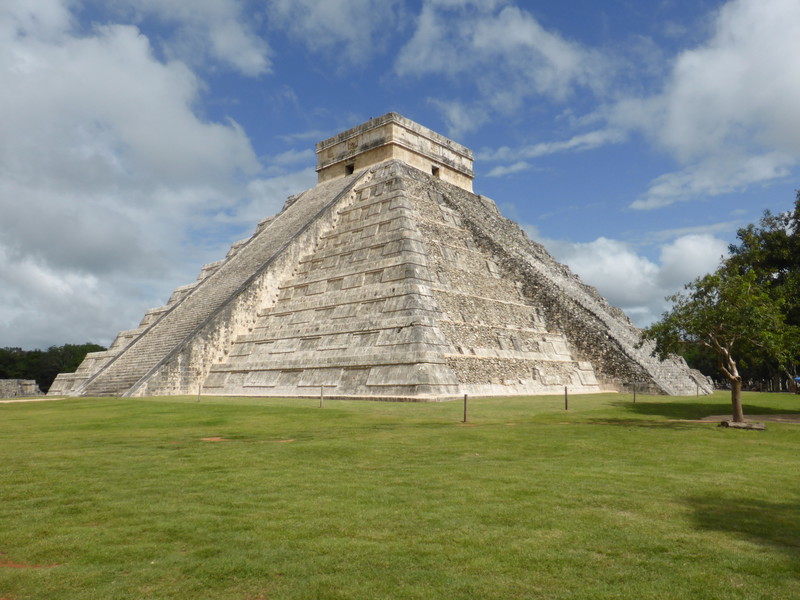
There are some people on the travelling circuit who grumble about Chichén Itzá, usually because it annoys them that it's one of the most popular tourist sites in Mexico, and they're the kind of people who just don't do populism, man; or perhaps they're travelling on a tight budget, and they complain about the price of a ticket, which at 182 pesos (about £9) is considerably more than, say, Tulum's 57 pesos (though it's hardly a big ask for such a world-class site). But there's a reason why 1.2 million people visit the ruins of this ancient Mayan city each year, and that's because it's amazing. And even if you don't like crowds, I wouldn't worry, because it's such a big site that it's easy to look past the hordes of tour groups and Mayan hawkers, and just enjoy staring at the magnificent architecture instead.
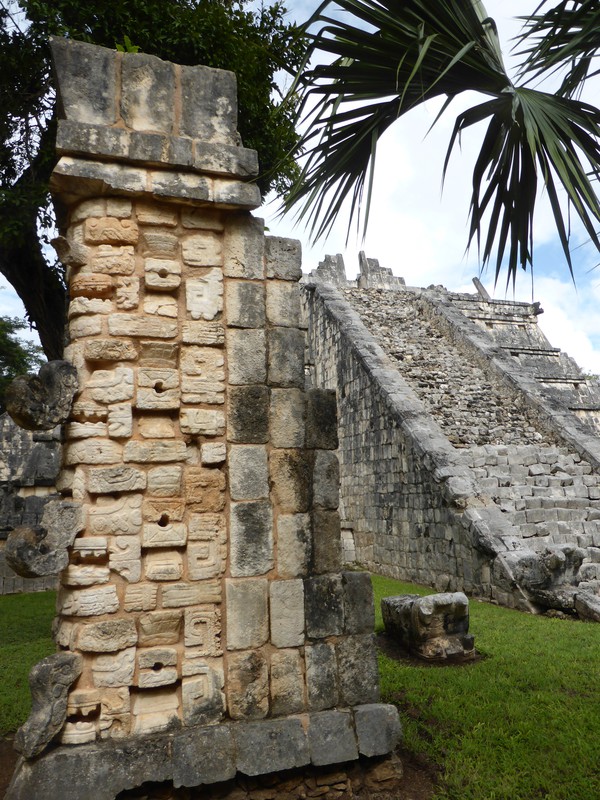
We kicked off our exploration of the many Mayan ruins of this part of the world with the gentle coastal site of Tulum, but where Tulum is all about the location and less about the architecture, Chichén Itzá is definitely about the buildings. They date from the second century AD to around 1200 AD, and after the site was abandoned in 1224, it lay in ruins, slowly mouldering under the encroaching forest until the hacienda containing the ancient city was bought at the beginning of the 20th century by Edward Thompson, a Harvard professor, for a whopping 750 pesos (that's about £35). He started excavating and exploring, and the result is one of the New7Wonders Foundation's 'New Seven Wonders of the World', if you're the kind of person who likes internationally compiled and hugely subjective lists (the others being the Taj Mahal, the Great Wall of China, Christ the Redeemer in Rio, the Colosseum in Rome, Machu Picchu and Petra, in case you were wondering).
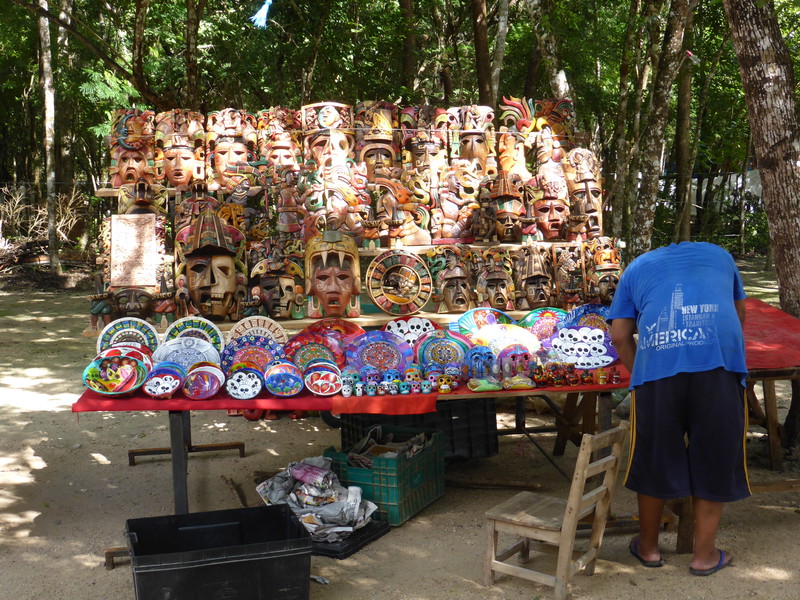
But before you get to see anything, you have to negotiate the insanely busy entrance hall, which is made all the more complicated by the fact that you have to buy two separate tickets from two separate booths – one for the federal government and another for the state agency that administers the site – so that's two separate queues that are kept moving at a snail's pace by two separate teams of equally dozy ticket sellers; at the state agency booth, the man serving me kept staring at his phone throughout our transaction, which meant he had to feel around for the change like a blind man, which only added to the sense of apathy. But once we got our tickets and joined a third queue to get through the gates, we were in, and boy, is it worth the Mexican bureaucracy.
Pyramids, Ball Games and Skulls
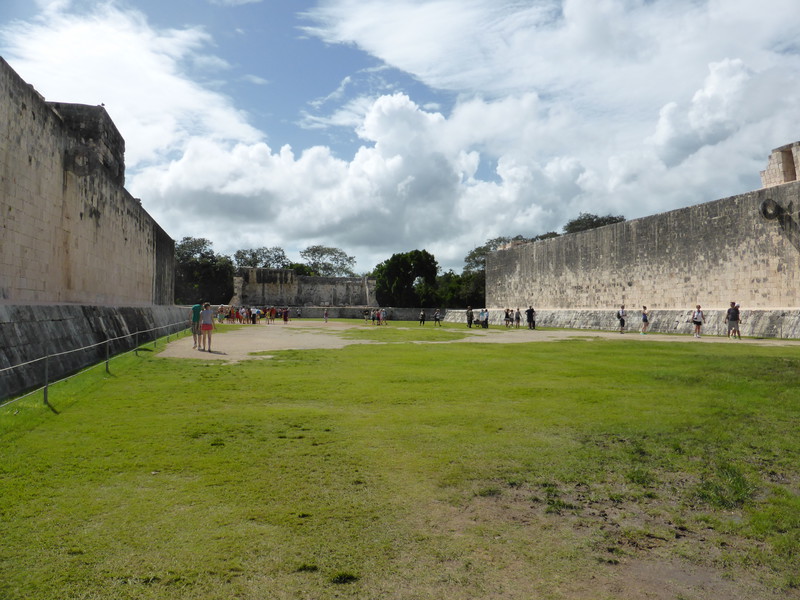
After a short walk along a path that's lined with Mayan stands selling all manner of tourist tack, from models of Mayan pyramids to skull masks, the first building looms up in front of you, and it's absolutely immense. El Castillo – which is what the Spanish called the Pyramid of Kukulcán – is a 25m-high pyramid with steps up each of the four sides, though unfortunately you aren't allowed to climb them. It dominates a large grassy expanse with a number of other large buildings dotted around the edges, most of which had ritual or administrative uses in the life of the ancient city, not unlike the centre of a modern town. It's an atmospheric sight, but there's a lot more to Chichén Itzá than the much-photographed central area, where the biggest groups of tourists gather round their guides in the shade of the few trees that dot the perimeter.
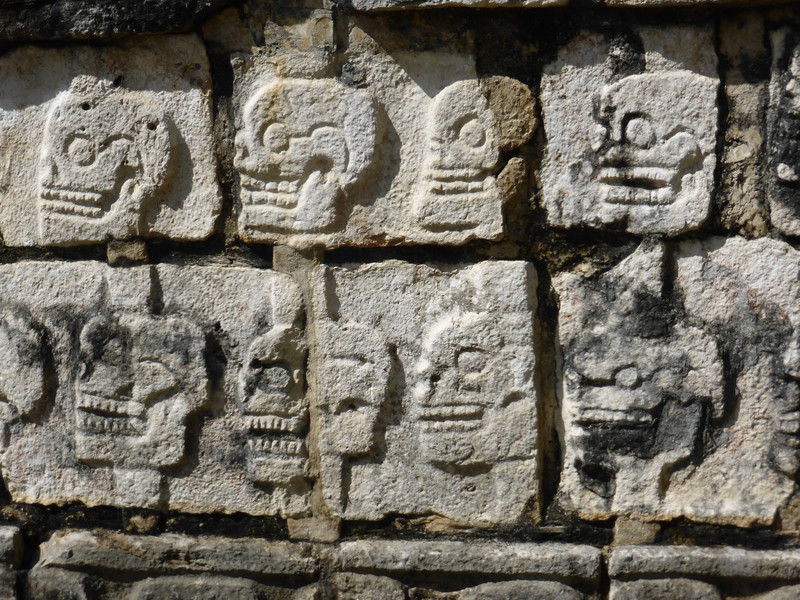
Not far from the pyramid is the Great Ball Court, where the ancient Mayans used to play the Mesoamerican ballgame. The rules of the game aren't known, but a modern version of the game is played that bears a resemblance to racquetball, and the court at Chichén Itzá is one of eight such courts in the ancient city; the game was clearly an important part of Mayan life. For modern visitors, the most intriguing aspect of the court is that you can stand at opposite ends of the arena and have a normal conversation, despite being some 135m away from each other; Peta and I tried it width-wise as it was a bit too crowded to test a length-wise conversation, and sure enough we could easily hear each other talking at a normal conversational level. It's clever stuff.

Next door is the Platform of the Skulls, which was used to display the decapitated heads of sacrificial victims; the fact that it's smothered in carvings of skulls and eagles tearing the hearts from men's chests is a bit of a giveaway. After the skulls there's a shady path that's lined with yet more Mayan hawker stands, where they claim that everything is either 'a dollar' or 'almost free', though that's clearly just a tactic to get you looking and negotiating; to be honest, the hawking is pretty tame, and they don't pester you beyond simply announcing their existence, which is a relief. Anyway, the path peters out at the Sacred Cenote, a huge hole in the ground with a murky lake at the bottom, where excavations have turned up lots of human bones from the unlucky people who were cast into the cenote as human sacrifices (the cenote was supposed to be the entrance to the underworld, and it's pretty easy to see why when you peer down into the 35m-deep hole).
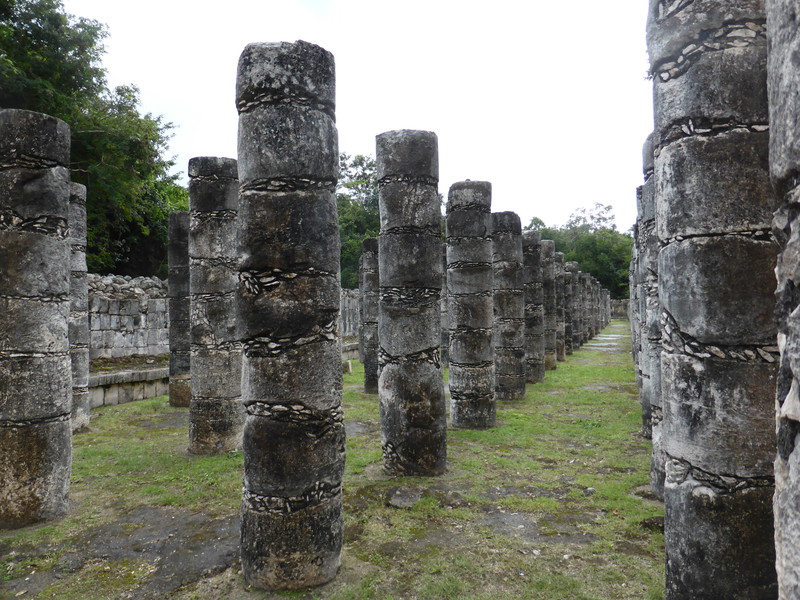
Back in the main square, you come across the Temple of the Warriors and the Group of the Thousand Columns, where rows and rows of carved columns stretch into the distance. These columns once had a roof over them, which would have made for an impressive building, but now all that's left are the columns, gently mouldering into the surrounding jungle. It's a shame that you can't climb to the top of these buildings, as by all accounts most of the good carvings can be found up there, but I guess you can't have 1.2 million people a year pounding away at these already fragile structures.
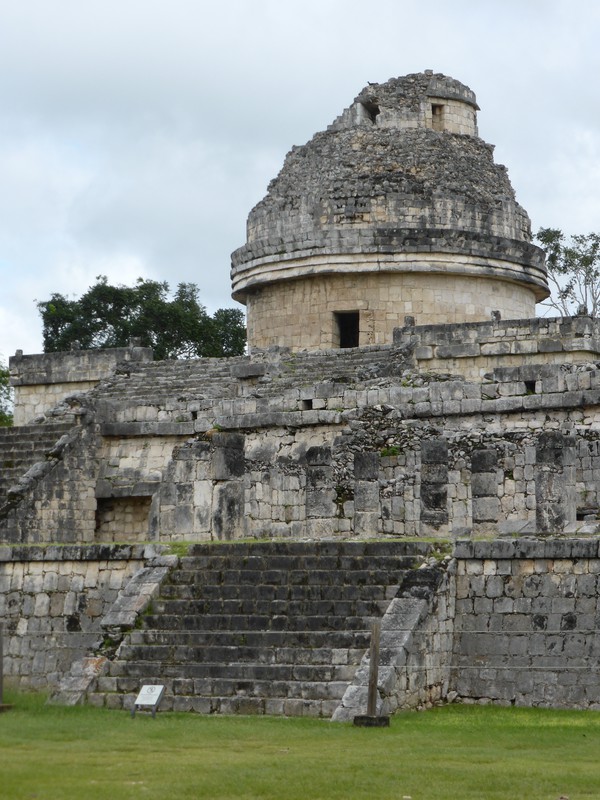
More paths and more hawkers take you past the High Priest's Grave (another pyramid) to El Caracol ('the snail'), which looks for all the world like a tumble-down astronomical observatory; indeed, it turns out that the doors in the domed structure lined up with certain stars at specific times of the year, so it was a kind of observatory after all, and from the dome priests would announce when to plant and harvest crops, as well as times for celebrations and religious rituals.
The final clump of buildings, just past the observatory, is the Nunnery, so named because the conquering Spanish thought it looked like a European convent; it's now thought to have been a place where Mayan royalty lived, and the carvings on the smaller buildings next door to the imposing 20m-high nunnery are exquisite. And just past them is Akab-Dzib, where the oldest ruins on site can be found, dating from the second century AD... and that's pretty much the core of the Chichén Itzá experience.
Wandering Around
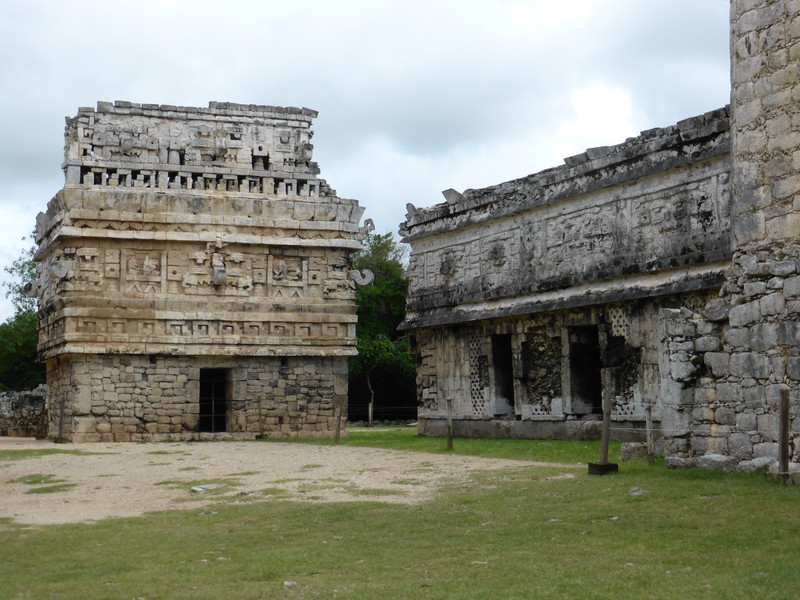
Chichén Itzá is packed with history and archaeological detail, absolutely everywhere you look. El Castillo, for example, is not only an impressive building that hides within its shell an even older pyramid dating from 800 AD; but the building's design also represents the Mayan calendar, with four stairways of 91 steps each, plus the platform at the top giving 365, the number of days in a year... and each face of the pyramid has 52 flat panels, which correspond to the 52 years in the Mayan calendar... and each of the nine levels is divided in two by the staircase, giving 18 separate terraces that correspond to the 18 months of the Mayan year (each of them 20 days long). Oh, and at the equinoxes, the sunlight shines through the steps to show an illusion of a moving serpent on the staircase. It's fascinating stuff.
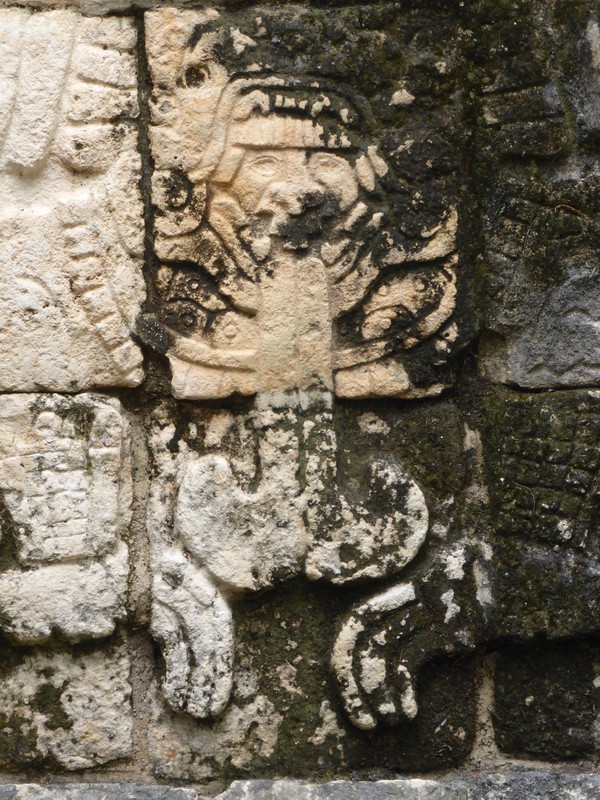
But you can get bogged down in all this detail, avidly turning the pages in your guidebook to reveal yet another fact about yet another building, but I found that the best way to enjoy it was just to wander through the site, thinking that a thousand years ago, this was a bustling city, with high priests, human sacrifices, markets, and at the height of its fame, some 90,000 inhabitants going about their daily lives. The jungle might have reclaimed most of the original 30km2 city, but what's left is impressive and moving, and if you can't see the beauty for the crowds, then you're really missing the point.
Even with the endless stalls of Mayan chess sets and model Castillos, and group after group after group of sweating tourists with glazed looks and video cameras, Chichén Itzá is astounding. Just imagine what it would have been like a hundred years ago, when the whole thing lay buried under the canopy of an overgrown hacienda. Now that would have really been something...